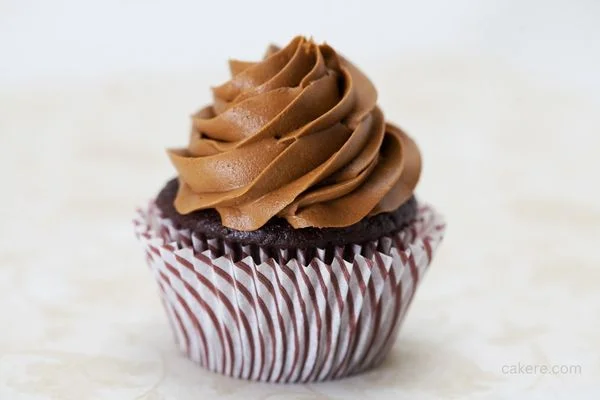Cupcake cakes have become a delightful and popular treat enjoyed by people of all ages. Combining the individuality of cupcakes with the visual appeal of a cake, these unique creations have captured the hearts and taste buds of dessert enthusiasts worldwide.

Origins of the Cupcake
The concept of individual-sized cakes dates back to ancient civilizations, including Egypt and Greece, where bakers would create small cakes using honey and wheat.
However, it was not until the Industrial Revolution that cupcakes as we know them today started to take shape. The introduction of reliable baking powder and smaller, more affordable ovens made it easier for home bakers to create these delectable treats.
Evolution of Cupcake Cakes
The transition from traditional cupcakes to cupcake cakes can be attributed to the desire for more elaborate and visually appealing desserts.
In the early 2000s, bakers began experimenting with new ways to present cupcakes. They started arranging individual cupcakes in the shape of a larger cake and frosting them collectively, creating a unique and eye-catching centerpiece. This innovative approach gave birth to the concept of the cupcake cake.
The Popularity of Cupcake Cakes
Cupcake cakes have gained immense popularity due to several factors that set them apart from traditional cakes. One of the key advantages is their versatility and customization options.
Cupcake cakes can be tailored to suit any occasion or theme, allowing for endless creativity. Whether it’s a birthday, wedding, or holiday celebration, cupcake cakes offer a visually stunning and delicious alternative to conventional cakes.
Cupcake Cake Designs
The world of cupcake cake designs is a delightful playground for bakers and decorators. From whimsical and playful designs to elegant and sophisticated creations, the possibilities are endless.
Themes and decorations can range from floral arrangements and cartoon characters to intricate patterns and three-dimensional structures. Bakers employ various techniques and tools such as piping bags, fondant molds, and edible embellishments to bring their visions to life.
Assembly and Decorating Tips
Assembling a cupcake cake requires precision and patience. The cupcakes are placed in a carefully planned pattern to form the desired shape, whether it’s a number, letter, or intricate design. A flat surface, such as a cake board or platter, serves as the foundation for the cupcake cake.
To ensure stability, a thin layer of frosting is applied between each cupcake to hold them in place. This creates a cohesive structure while allowing for easy slicing and serving. Once the cupcakes are secured, a generous amount of frosting is applied over the entire surface, creating a smooth canvas for further decorations.
Decorating cupcake cakes is where the true magic happens. Bakers employ various techniques, such as piping, fondant sculpting, and edible painting, to bring their creative vision to life. Intricate details, such as flowers, intricate patterns, or even edible images, can be added to enhance the overall design. The possibilities are limited only by the baker’s imagination.
Cupcake Cakes Around the World
Cupcake cakes have not only captured the hearts of dessert lovers in the Western world but have also found their place in various international cuisines. Each culture adds its unique twist, incorporating local flavors, techniques, and traditions.
In England, the traditional Victoria Sponge cake has inspired cupcake cakes with layers of delicate sponge cake, jam, and buttercream frosting.
In Mexico, the tres leches cake, soaked in a mixture of three milks, has been transformed into cupcake form. Similarly, Asian countries have their own variations, such as the matcha green tea cupcake cake in Japan and the coconut-infused cupcake cake in Thailand.
Cupcake cakes have also become symbols of celebration in many cultures. In India, elaborate cupcake cakes adorned with colorful patterns and intricate designs are created for weddings and festivals.
In America, cupcake cakes are a staple at birthday parties, baby showers, and other special occasions, often reflecting the theme or interests of the honoree.
FAQs
Cupcake cakes, like traditional cakes, are best enjoyed fresh. They can typically be stored at room temperature for up to 2-3 days if properly stored in an airtight container. However, for optimal freshness, it is recommended to consume them within the first day or two.
Yes, cupcake cakes can be frozen. It’s best to freeze them unfrosted and wrapped tightly in plastic wrap or stored in freezer bags. When ready to serve, thaw them in the refrigerator overnight and frost them just before serving to maintain their texture and taste.
The cost of cupcake cakes can vary depending on factors such as the number of cupcakes used, the complexity of the design, and the customization involved. In some cases, cupcake cakes can be more cost-effective than traditional cakes, especially for larger gatherings where individual servings are desired.
Yes, cupcake cakes can be made with gluten-free ingredients. There are various gluten-free flour blends and substitutes available that can be used to create delicious gluten-free cupcakes. It’s important to ensure that all other ingredients, including frosting and decorations, are also gluten-free to accommodate those with dietary restrictions.
Cupcake cakes have gained popularity as an alternative to traditional wedding cakes. They offer versatility in terms of flavors, designs, and portion sizes. Cupcake cakes can be arranged to create stunning displays and can cater to individual preferences by offering a variety of flavors. They also allow for easier serving and portion control during the wedding reception.
Conclusion
The history of cupcake cakes is a tale of creativity and innovation. From humble origins as individual cupcakes to the stunning works of art we see today, cupcake cakes have taken the world by storm.
Their versatility, customizability, and visual appeal make them a favorite choice for celebrations of all kinds.
